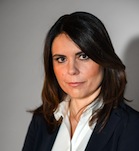
A circular approach to water efficiency
Increasing global competition for the use of water poses a growing risk to the economy, communities and the ecosystems they rely on.
For example, in 2017 global withdrawals amounted to approximately 6 000 cubic kilometres, and it is estimated that this may rise to approximately 8 700 cubic kilometres in 2050, and nearly 12 700 cubic kilometres in 2100.
This continuous increase in demand, together with the effects of climate change and the resulting increase in average temperatures, raises the alarm that there may be increasing numbers of areas subject to water scarcity.
The issue of sound and efficient management of water resources is therefore becoming increasingly pressing.
Increasingly, and with just cause, water is seen more and more as a precious and scarce resource.
Europe is not an arid continent, but water supplies are now a concern for almost half of the EU population.
Europe’s geography and climate implies that water distribution is uneven in the EU, a situation made worse by human activity.
In southern Europe, for instance, tourist development has increased demand for water, resulting in desertification and salt water intrusion into aquifers located in some coastal freshwater zones.
According to studies carried out by the EEA, if we look at the water exploitation index, we find countries such as Cyprus, Bulgaria, Belgium, Spain, Italy and Malta where the ratio is currently 20% or higher.
This equates to serious stress on water reserves. Water scarcity is most acute in the south, but by no means limited to these areas: the Commission has pointed out that most Member States have suffered episodes of drought since 1976, and many now report frequent water scarcity problems and over exploited aquifers.
Water scarcity is a phenomenon that affects at least 11% of the European population and 17% of EU territory.
Since 1980, the number of droughts in Europe has increased, and they have become more severe, costing an estimated EUR 100 billion over the past 30 years.
The droughts of the summer of 2017 illustrated, once again, the extent of economic losses; the Italian farming sector alone predicted losses of EUR 2 billion.
This trend is expected to continue: water scarcity is no longer confined to a few corners of Europe, but is already a concern across the EU.
Finding appropriate solutions at EU level to protect water has therefore become crucially important in maintaining a high level of wellbeing for citizens and in preserving the environment.
In its 2012 Communication entitled ‘A Blueprint to Safeguard Europe’s Water Resources’ the Commission had already identified the reuse of urban waste water as one of the alternative water supply measures with a low environmental impact able to address the problem of water scarcity.
The EU legislation, and specifically the Water Framework Directive (2000/60/EC), mentioned the reuse of urban waste water as an additional measure for the efficient management of water resources.
However, the benefits deriving from this activity have not yet been fully realised, because of the lack of clear legislation and specific rules.
According to the data provided by the Commission, the total potential for reuse of water by 2025 is approximately 6.6 billion m3, compared to the current 1.1 billion m3 per year.
That would require investment of at least EUR 700 million and would make it possible to reuse over 50% of the total volume of water coming from EU waste water treatment plants theoretically available for irrigation, avoiding more than 5% of direct extraction from bodies of wastes and groundwater.
In this context the European Parliament welcomes the European Commission initiative for a a proposal for a regulation on minimum requirements for water reuse
The Commission proposal wants to achieve the above-mentioned objectives by laying down harmonised rules at EU level, with a view to avoiding differing requirements in Member States having an adverse effect on a level playing field and causing obstacles to the smooth operation of the internal market.
As the EP rapporteur, I support the need for a regulation to lay down harmonised criteria at EU level for the reuse of urban waste water. For this reason, I consider the proposal to be a useful tool for ensuring safety and increased uptake of reclamation activities.
However, we have to be sure to provide a clear legislation, particularly in relation to the definitions, roles and responsibilities of the various entities involved and the main risk management activities.
There needs to be a more precise definition of the difference between ‘treated’ water, i.e. water given appropriate treatment, as required by Directive 91/271/EEC, and reclaimed water included within the scope of this regulation.
It is important not to restrict possible uses solely to use for agricultural irrigation purposes but to expand them, as is already the case in some Member States, to include public purposes (irrigation of green areas or golf courses) and environmental purposes (combating salt-water intrusion or maintaining minimum ecological flow).
Reuse for industrial purposes can have huge potential but I considers that such reuse ought to be incentivised and regulated at national level on the basis of individual cases.
Minimum requirements for a risk management plan for the recovery of reclaimed water are an important tool to ensure high protection for human health and environment .
I consider that this task should be coordinated by the competent authority, which can provide a more accurate and independent assessment of the entire water supply chain.
Finally it is vital to focus on the need for awareness-raising measures highlighting the water resource savings resulting from the reuse of urban waste water and the control system that guarantees that the reclaimed water is healthy.




